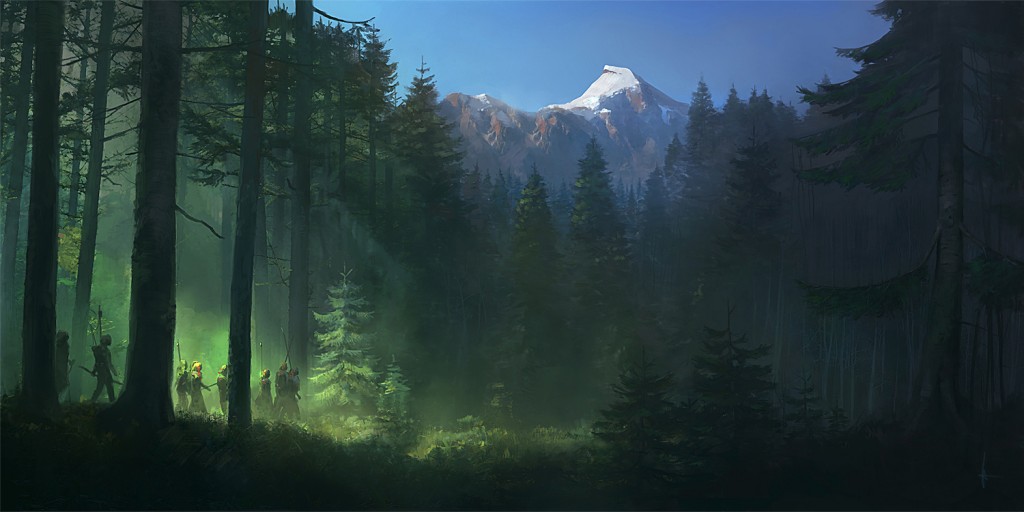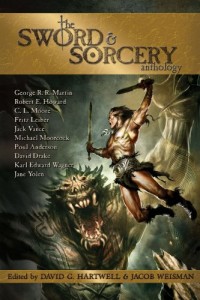The Ancient Lands lie on the eastern coast of a large continent, which runs approximately from North to South for about 2,000 miles. The northernmost parts, bordering the arctic sea, have a cold climate with long winters and don’t see the sun for about two weeks. The very south is covered by huge jungles experiencing heavy monsoon seasons. Most people live close to the coast and no more than a hundred miles from the sea, with civilization reaching farther inland only along the major rivers that run from the highlands and mountains in the west to the sea in the east. With wind predominantly blowing from the east, ships can relatively easily up the rivers for considerable distances. As there are very few roads in the Ancient Lands, almost all trade and long distance travel is done by ship. Only the caravans that bring goods from the human lands on the plains in the west form a major overland trade route. In addition to the major population centers on the coast, there are also thousands of islands of various sizes, of which a countless number is inhabited by elves, lizardmen, or humans, but an even larger number is completely unsettled and unexplored.
The Far North: In the very north of the Ancient Lands, between the arctic sea and a long mountain range that forms a natural border to the lands in the south, lies the little known homeland of the Mari, a small population of tall humans with pale skin and rich brown hair. While most humans in the Ancient Lands are the descendants of nomads who have arrived from the west only in recent centuries, the Mari apparently have inhabited this land forever and neither elves nor kaas have any legends of their first arrival. There are few trees in the Far North and very little grows during the short farming season, so the Mari live mostly from herding reindeer, hunting elks, seals, and whales, and fishing. Few traders make the long trip over the treacherous seas, but thick animal furs and whalebone are quite valuable in many lands to the south. The Far North is home to many strange spirits unlike those found anywhere else in the Ancient Lands, whose motives are very hard to understand even for experienced shamans and witches visiting from other lands.
The Witchfens: South of the mountains that protect the rest of the Ancient Lands from the worst of the arctic winter lies a large highland of fens and bogs known to the people of the surrounding regions as the Witchfens. Very few people ever go there as there is nothing to be found that would be valuable for trade and is home to all manners of dangerous and hostile spirits. Fog and light rain dominate the weather and during the summer it’s a breeding ground for huge swarms of insects. Despite being regarded as one of the most inhospitable places in the Ancient Lands, it has been home to a secluded group of small human tribes known as the Katra, who have arrived there less than a thousand years ago. While they look similar in appearance to the Vandren who have settled in much larger numbers in the south, and share a somewhat similar language, their culture has become entirely different and they regard each other and strangers. These people live in small villages made from uncut stones with earthen roofs and have only very little metal, which they seem to get mostly from raids on neighboring lands. A peculiar trait of their society is that each clan is not ruled by a chief, but instead only has a first warrior who is loyal to an Elder Witch. The witches are almost all female and are the real rulers of this dreadful land. They don’t leave their homeland and do not accompany the warriors on raids and it is most likely that their special relationship to the spiteful spirits of this land is the true reason why their people have settled there.

The Western Forests: In the west of the Witchfens the swamps gradually turn into a forest of pines and firs that are part of the huge woodlands that cover most of the Ancient Lands. These forests, together with the northernmost parts of the great plains that lie beyond the western edges of the woodlands, are the homeland of the kaas. These beastmen are taller and stronger than either humans and elves and can wrestle easily with lizardmen – though it is rare that these two peoples meet – and are equally at home in the forests, the plains, and the barren hills they have inhabited for unknown ages. Sometimes they travel along the coast of the arctic sea in boats to trade with the Mari, but there are no roads that connect their distant homeland with the rest of the Ancient Lands. Mercenaries and explorers often travel south to the lands of the Falden and Vandren along old paths, but most of them are impossible to use with carts. To the other people of the Ancient Lands the kaas are a people of strong warriors hailing from a mystical land and they generally seem not inclined to talk a lot about their culture and traditions. There is also a small stronghold of Eylahen elves in the foothills of the northern mountain range, which overlooks the western end of the Witchfens.



